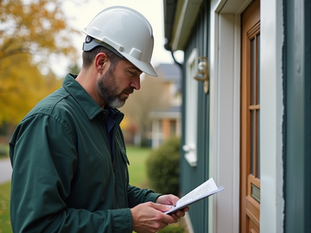
Locating Your Water Shutoff Valve A Simple Guide to Get Started
Jul 7
4 min read
0
6
0

Understanding how to locate your water shutoff valve is an essential skill for every homeowner. Whether you're facing a plumbing emergency like a burst pipe or just need to turn off the water for a repair, knowing where your valve is can save you time, stress, and money. In this guide, we will walk you through the steps to find your water shutoff valve efficiently.
What Is a Water Shutoff Valve?
A water shutoff valve is a crucial component in your plumbing system. It regulates the flow of water entering your home. In emergencies, such as a burst pipe or a leaking faucet, turning off the water supply quickly can prevent significant damage.
Typically, the valve is located near the point where the main water line enters your home. Common places to find it include basements, crawlspaces, and outside near the foundation.
Types of Water Shutoff Valves
Before searching for the valve, it’s helpful to know the types commonly found in homes:
1. Gate Valve
This type features a round wheel handle and is often found in older homes. They can be more challenging to turn and may require more effort to operate.
2. Ball Valve
Ball valves are more common in modern installations. They have a lever handle and are easier to turn. When shut, the lever is perpendicular to the pipe. According to plumbing experts, about 80% of recent constructions use ball valves for their ease of use.
3. Stop Valve
Stop valves are generally found on individual plumbing fixtures, like sinks and toilets. They control the water flow to these specific units, allowing for quick repairs.
Steps to Locate Your Water Shutoff Valve
Step 1: Check the Basements and Crawlspaces
Start your search in the basement or crawlspace if you have one. Follow the water pipe that comes from the ground or wall, as this typically leads to the shutoff valve.
If located in the basement, the valve is often mounted to a wall or close to the floor, making it easier to reach.
Step 2: Look Near Entry Points
In many homes, the water shutoff valve is situated near where the main water line enters the house. This could be in your utility room, laundry room, or even outside near the foundation. Inspect areas close to the foundation walls or the external perimeter of the house for an exterior shutoff valve.
Step 3: Check Under the Kitchen Sink
If you couldn’t find the valve earlier, check under the kitchen sink. Many homes have local shutoff valves here, allowing for convenient access when needed.
Step 4: Explore the Bathroom Areas
Similar to the kitchen, bathrooms often have local shutoff valves for sinks and toilets. While these won't shut off the entire water supply, knowing their location is helpful for specific repairs.
Step 5: Ensure Accessibility
Make sure the shutoff valve is easily accessible. Clearing any clutter around it is a good idea, ensuring you can reach it quickly in an emergency.
Identifying the Valve
Once you find a potential valve, it's crucial to identify it accurately. Here are a few features to help:
Check the handle: A valve with a round wheel often indicates a gate valve, while a lever handle typically signifies a ball valve.
Examine the piping: Follow the water line. If you see a joint that can be turned, you’ve likely found your shutoff valve.
Testing Your Valve
It’s important to test your valve periodically to ensure it’s functional. Here's how to do it:
Turn Off the Valve: Rotate it clockwise until it’s fully closed.
Check Faucets: Open a faucet nearby to ensure the water flow has stopped.
Reopen the Valve: Turn the valve counterclockwise to restore the water flow.
Take note of how easy or hard it is to turn the valve. If it feels stuck or doesn’t operate smoothly, consider having a plumber check it. Regular testing can enhance your preparedness for plumbing issues.
Additional Tips
Keep a Record: Once you find your shutoff valve, mark the location on a home diagram or emergency information sheet. This will help if someone else needs to find it.
Educate Family Members: Make sure all family members know where the valve is located and how to operate it. This ensures a quick response in case of an emergency.
Consider Installing an Exterior Valve: If your home lacks easy access to a shutoff valve, think about installing an exterior one. This can provide quicker access in emergencies.
Final Thoughts
Knowing how to locate your water shutoff valve is a valuable skill for homeowners. With the steps outlined in this guide, you can quickly find the valve and ensure you are prepared for any plumbing emergencies. Regular checks and maintenance of your shutoff valve can help prevent water damage and keep your plumbing system in good shape.
Don’t wait until an emergency arises—take the time to locate and understand your water shutoff valve today. By keeping this guide handy, you’ll be well-equipped to manage your water supply effectively and efficiently.






